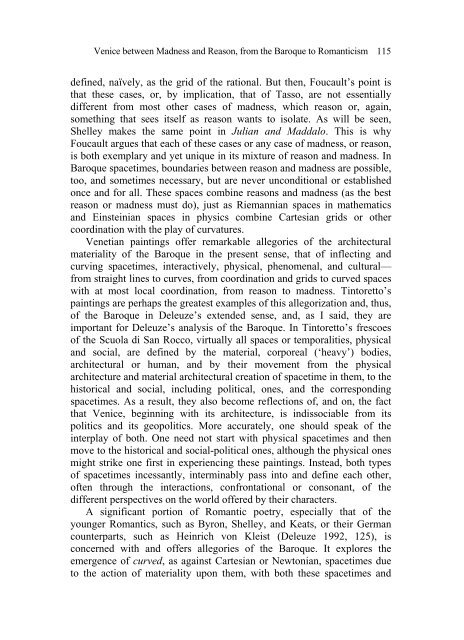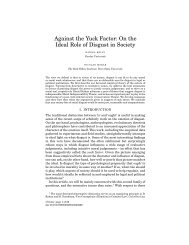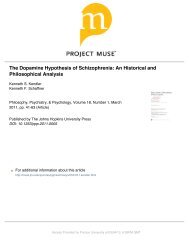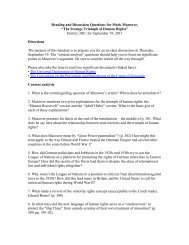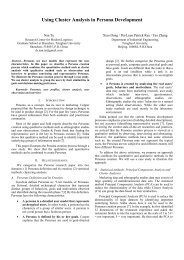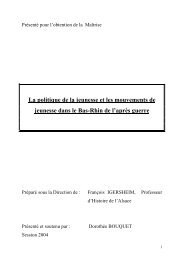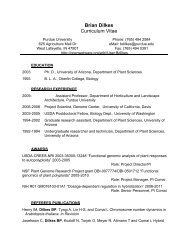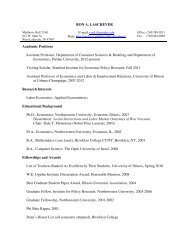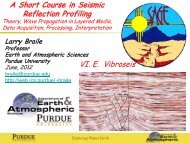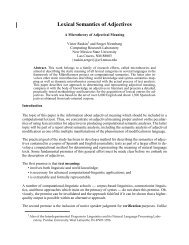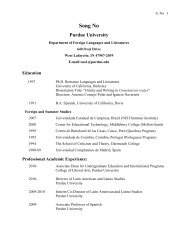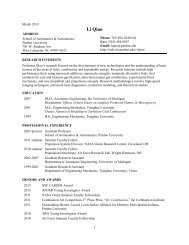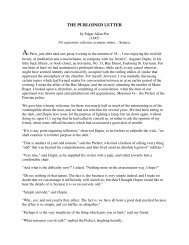'a palace and a prison on each hand': venice between madness and ...
'a palace and a prison on each hand': venice between madness and ...
'a palace and a prison on each hand': venice between madness and ...
You also want an ePaper? Increase the reach of your titles
YUMPU automatically turns print PDFs into web optimized ePapers that Google loves.
Venice <strong>between</strong> Madness <str<strong>on</strong>g>and</str<strong>on</strong>g> Reas<strong>on</strong>, from the Baroque to Romanticism 115<br />
defined, naïvely, as the grid of the rati<strong>on</strong>al. But then, Foucault’s point is<br />
that these cases, or, by implicati<strong>on</strong>, that of Tasso, are not essentially<br />
different from most other cases of <strong>madness</strong>, which reas<strong>on</strong> or, again,<br />
something that sees itself as reas<strong>on</strong> wants to isolate. As will be seen,<br />
Shelley makes the same point in Julian <str<strong>on</strong>g>and</str<strong>on</strong>g> Maddalo. This is why<br />
Foucault argues that <strong>each</strong> of these cases or any case of <strong>madness</strong>, or reas<strong>on</strong>,<br />
is both exemplary <str<strong>on</strong>g>and</str<strong>on</strong>g> yet unique in its mixture of reas<strong>on</strong> <str<strong>on</strong>g>and</str<strong>on</strong>g> <strong>madness</strong>. In<br />
Baroque spacetimes, boundaries <strong>between</strong> reas<strong>on</strong> <str<strong>on</strong>g>and</str<strong>on</strong>g> <strong>madness</strong> are possible,<br />
too, <str<strong>on</strong>g>and</str<strong>on</strong>g> sometimes necessary, but are never unc<strong>on</strong>diti<strong>on</strong>al or established<br />
<strong>on</strong>ce <str<strong>on</strong>g>and</str<strong>on</strong>g> for all. These spaces combine reas<strong>on</strong>s <str<strong>on</strong>g>and</str<strong>on</strong>g> <strong>madness</strong> (as the best<br />
reas<strong>on</strong> or <strong>madness</strong> must do), just as Riemannian spaces in mathematics<br />
<str<strong>on</strong>g>and</str<strong>on</strong>g> Einsteinian spaces in physics combine Cartesian grids or other<br />
coordinati<strong>on</strong> with the play of curvatures.<br />
Venetian paintings offer remarkable allegories of the architectural<br />
materiality of the Baroque in the present sense, that of inflecting <str<strong>on</strong>g>and</str<strong>on</strong>g><br />
curving spacetimes, interactively, physical, phenomenal, <str<strong>on</strong>g>and</str<strong>on</strong>g> cultural—<br />
from straight lines to curves, from coordinati<strong>on</strong> <str<strong>on</strong>g>and</str<strong>on</strong>g> grids to curved spaces<br />
with at most local coordinati<strong>on</strong>, from reas<strong>on</strong> to <strong>madness</strong>. Tintoretto’s<br />
paintings are perhaps the greatest examples of this allegorizati<strong>on</strong> <str<strong>on</strong>g>and</str<strong>on</strong>g>, thus,<br />
of the Baroque in Deleuze’s extended sense, <str<strong>on</strong>g>and</str<strong>on</strong>g>, as I said, they are<br />
important for Deleuze’s analysis of the Baroque. In Tintoretto’s frescoes<br />
of the Scuola di San Rocco, virtually all spaces or temporalities, physical<br />
<str<strong>on</strong>g>and</str<strong>on</strong>g> social, are defined by the material, corporeal (‘heavy’) bodies,<br />
architectural or human, <str<strong>on</strong>g>and</str<strong>on</strong>g> by their movement from the physical<br />
architecture <str<strong>on</strong>g>and</str<strong>on</strong>g> material architectural creati<strong>on</strong> of spacetime in them, to the<br />
historical <str<strong>on</strong>g>and</str<strong>on</strong>g> social, including political, <strong>on</strong>es, <str<strong>on</strong>g>and</str<strong>on</strong>g> the corresp<strong>on</strong>ding<br />
spacetimes. As a result, they also become reflecti<strong>on</strong>s of, <str<strong>on</strong>g>and</str<strong>on</strong>g> <strong>on</strong>, the fact<br />
that Venice, beginning with its architecture, is indissociable from its<br />
politics <str<strong>on</strong>g>and</str<strong>on</strong>g> its geopolitics. More accurately, <strong>on</strong>e should speak of the<br />
interplay of both. One need not start with physical spacetimes <str<strong>on</strong>g>and</str<strong>on</strong>g> then<br />
move to the historical <str<strong>on</strong>g>and</str<strong>on</strong>g> social-political <strong>on</strong>es, although the physical <strong>on</strong>es<br />
might strike <strong>on</strong>e first in experiencing these paintings. Instead, both types<br />
of spacetimes incessantly, interminably pass into <str<strong>on</strong>g>and</str<strong>on</strong>g> define <strong>each</strong> other,<br />
often through the interacti<strong>on</strong>s, c<strong>on</strong>fr<strong>on</strong>tati<strong>on</strong>al or c<strong>on</strong>s<strong>on</strong>ant, of the<br />
different perspectives <strong>on</strong> the world offered by their characters.<br />
A significant porti<strong>on</strong> of Romantic poetry, especially that of the<br />
younger Romantics, such as Byr<strong>on</strong>, Shelley, <str<strong>on</strong>g>and</str<strong>on</strong>g> Keats, or their German<br />
counterparts, such as Heinrich v<strong>on</strong> Kleist (Deleuze 1992, 125), is<br />
c<strong>on</strong>cerned with <str<strong>on</strong>g>and</str<strong>on</strong>g> offers allegories of the Baroque. It explores the<br />
emergence of curved, as against Cartesian or Newt<strong>on</strong>ian, spacetimes due<br />
to the acti<strong>on</strong> of materiality up<strong>on</strong> them, with both these spacetimes <str<strong>on</strong>g>and</str<strong>on</strong>g>


